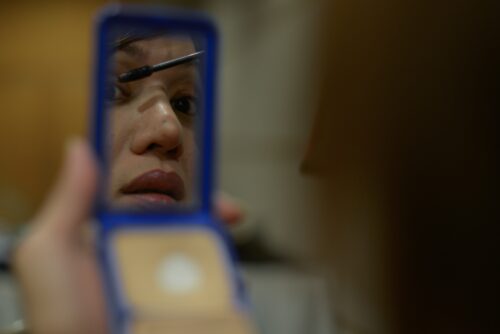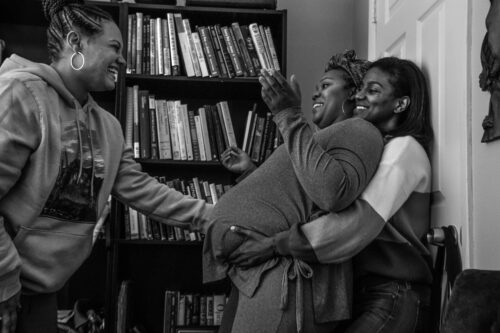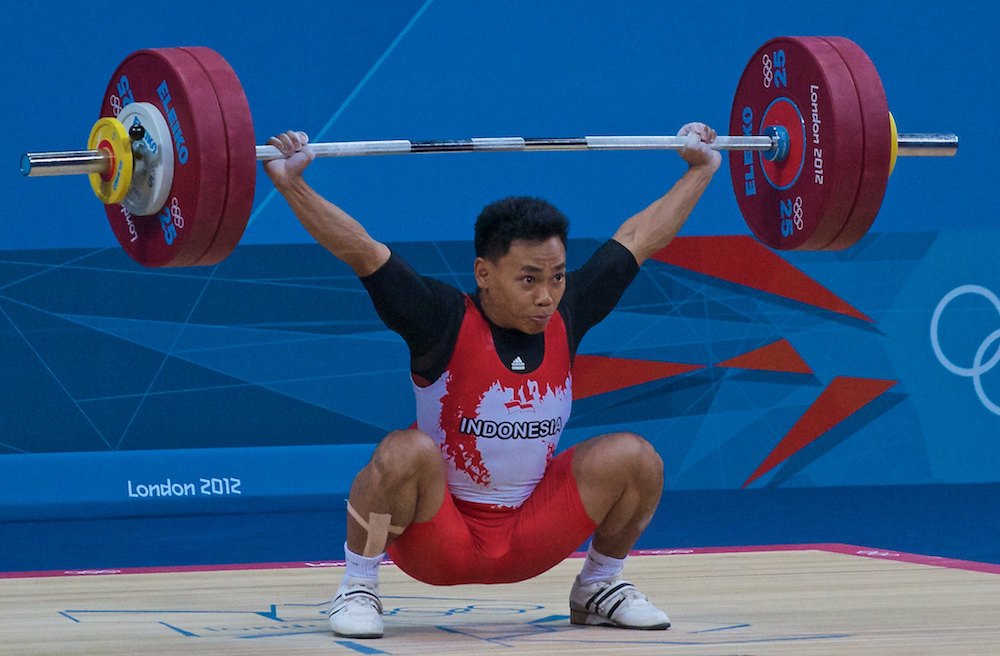Sex in Sport: Men Don’t Always Have the Advantage

As the Summer Olympics gear up to kick off in Tokyo, Japan, on July 23—delayed a year thanks to the pandemic—sexism in sports has again become a hot topic. In February, Olympic organizing committee president Yoshiro Mori resigned after saying he thought women talked too much; in March, the games’ creative director Hiroshi Sasaki stepped down after directing demeaning comments at a female celebrity in Japan.
Also in March, an Instagram photo of training equipment provided to the men’s teams versus the women’s teams for the National Collegiate Athletic Association (NCAA) basketball players went viral, with the post’s author, and many commentators, scandalized by the meager offerings for women.
One need only scroll social media comment sections to find claims that this was not a case of sexism because, commentators argue, men are better athletes and generate more revenue than women. The money argument is a strange and weak one, given that the women’s NCAA basketball Division I reportedly pulled in nearly a billion dollars in revenue for 2018–2019. As a biological anthropologist, I find the “men are better athletes” stereotype—which turns up in so many places, in so many ways—particularly frustrating.
Athletic performance differences can be caused by all manner of things across four broad categories: anatomical (physical features such as height), physiological (functional factors like the body’s ability to deliver oxygen to muscles), psychological, and socioeconomic (such as access to equipment and training knowledge). A number of myths and misconceptions exist within each of these categories that tend to ascribe overwhelming advantages to men.
I am here to dispel those myths and misconceptions.
A quick aside: There are different ways to define biological sex (based on the presence of gonads, internal and external genitalia, chromosomes, or hormones). None of these consistently present a clear and hard boundary between male and female; instead, each presents a range of variation. The binary scheme of sex categorization is a false dichotomy: a dichotomy that is misunderstood and misappropriated in ways that can cause harm. This is the dichotomy that I must work within, as most—if not all research—on athletes considers sex a binary attribute.
That said, there are some real, uncontroversial average differences between groups typically categorized as women and men. And the ones conferring an advantage to women, as opposed to men, tend to be less well-known.
Anatomically, on average, men have larger hearts, larger lungs, less body fat, and more muscle mass than women. With the exception of body fat (which is linked to reproduction), many of these anatomical differences are due to the fact that men are typically larger than women. In muscular people, muscle mass tends to be more exaggerated in the upper body for men, whereas women often have greater lower body muscle mass. These differences do sometimes confer an athletic advantage to men, especially in sports that rely on power or being of a larger size, such as rugby. But size isn’t everything.
Importantly, there is no significant difference in strength between women and men with the same muscle mass. Furthermore, there appears to be no difference between women and men in terms of being able to activate muscle, known as neuromuscular recruitment. This matches up with more and more research that indicates there are no meaningful neurological differences between women and men.
Along with larger hearts and lungs, men also have a greater number of red blood cells (linked to the production of testosterone), which can give them an advantage in terms of oxygen delivery throughout the body—particularly for endurance sports such as running or cycling. Yet women appear to be metabolically better suited for endurance.
Research indicates that women are better able to manage glucose—a simple sugar used by the body for energy—and store it in muscle, where it can be quickly used when taking part in endurance events. Women also have more adiponectin (a hormone that regulates fat metabolism) and a higher concentration of fatty acids and intramuscular triglycerides. These factors can all enhance glucose use and fat-burning capacities during endurance exercise, and may delay the phenomenon of “hitting the wall”—the point at which an athlete feels they cannot go any further.
Anatomically, women tend to have a greater proportion of “slow-twitch” muscle fibers: These are less powerful but more fatigue resistant. Conversely, men on average have more “fast-twitch” fibers that produce quick, powerful bursts of strength but fatigue quickly. (Although in one study of weightlifters, women had more fast-twitch muscles than men, suggesting that training and other factors are more important determinants than sex when it comes to muscle composition.) Slow-twitch fibers are associated with success in endurance sports, like long-distance running, whereas fast-twitch fibers are more associated with power sports, such as sprinting and weightlifting.
In addition to the greater abundance of slow-twitch fibers, women overall seem to be better at enduring in the face of continued exertion and stress—whether that’s due to physical or psychological factors. Two analyses of speed change over the course of marathon races, for example, found that women were able to maintain a more consistent pace than men. And a study examining serve performance among tennis players found that men consistently “choked” under high pressure situations far more regularly than women did.
This, of course, flies in the face of the idea that men are better at “toughing it out.” It’s complicated, though: Recent studies, for example, hint that men and women feel pain differently. It’s not clear how that might affect athletic performance.
Many people will likely point out that men are still outperforming women in long-distance events. This is true, but it is also changing. Women are now regularly finishing ultra-endurance events before men: like Jasmin Paris, who won the Montane Spine Race—an epic, week-long run of more than 260 miles from England to Scotland—in 2019 while still breastfeeding her child. As more women take part in these ultra-endurance events, we are likely going to see a greater number of women outperforming men.
There is a pernicious and persistent sex-based hormone myth that says testosterone is exclusively male, estrogen exclusively female, and that testosterone is the secret ingredient for athletic success.
None of this is true.
First, women and men need both hormones in order to function properly. When women ovulate, testosterone plays a critical role, just as estradiol (a predominant form of estrogen) is crucial in men for sperm formation. Second, while it is true that women tend to have more estrogen and men more testosterone, there is a great deal of individual variation and an overlap in ranges—particularly among athletes. A study among close to 700 elite athletes found that about 5 percent of women had testosterone levels in the typical male range and about 2 percent of men had levels in the typical female range.
Women appear to be metabolically better suited for endurance.
Testosterone, like all hormones, has multiple effects throughout the body. While it is true that testosterone can, in very large doses, lead to increased muscle mass, the link between natural levels of testosterone and muscle mass is not consistent across populations. Furthermore, evidence unequivocally linking natural testosterone levels to improved athletic performance remains elusive.
Estrogen, on the other hand, seems to play a critical role in endurance performance, potentially due to its role in glucose metabolism. One research study found that endurance-trained men had significantly more estrogen receptors on their muscles than moderately active men.
Despite all this, World Athletics regulations, which are followed by the International Olympic Committee, determine eligibility of certain athletes in the female classification of some athletic events based on testosterone levels. These protocols assume that testosterone always confers an advantage, and these organizations apply this rule only to a handful of sports, like middle-distance running, for which testosterone may not confer an advantage at all.
The result is often a travesty on many levels, with women being barred from competing (based on a questionable reading of the science) or having to undergo potentially detrimental medical treatment to lower their natural testosterone levels, which can have multiple negative effects.
Everything I just told you about female and male differences may be wrong.
Why? Women are horribly underrepresented in exercise physiology—both as researchers and research participants.
Because of this lack of representation, we know comparatively little about the best training and nutritional practices for women much less their performance limits. Furthermore, we know very little about how the menstrual cycle (for women who menstruate) impacts performance, as current studies are plagued by a small number of participants, a lack of actual hormone measurements, and poor accounting for hormonal contraceptive use.
Current recommendations for best practices for women usually fall into the category of “shrink it and pink it”: the common tactic in marketing (and even medicine) of “customizing” products for women by simply making things smaller (such as dosing amounts) and changing the color. Women are typically treated like little men. This is a biased way to treat women that is unrepresentative of reality.
There are true differences, though a great deal of variation, between women and men. These may, on average, give men an advantage in strength and power-based activities, and women an advantage in endurance sports.
Many of the differences we have learned are wrong, while the biologically meaningful differences are often understudied or ignored. That needs to change if we are to banish sexism in sport and take seriously the training and nutrition of female athletes the world over.
Correction: June 11, 2021
This article has been corrected to avoid implying that the average anatomical difference in muscle mass between men and women is entirely due to differences in body size.



























